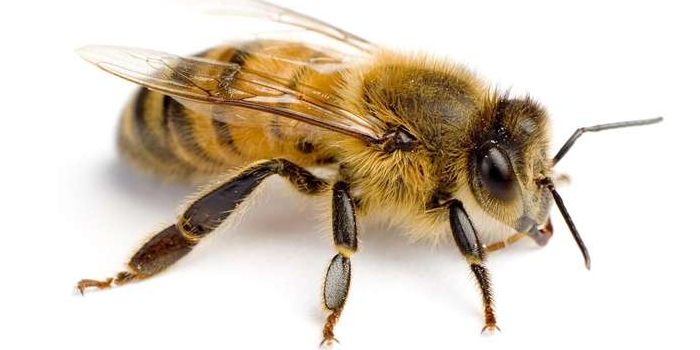
We’re the leading providers of pest control exterminator services for bees wasp in Union NJ
Please give us a call at 908 982 4718 in order to get started with the process.
Bees
Bees are flying insects closely related to wasps and ants, known for their role in pollination and, in the case of the best-known bee species, the western honey bee, for producing honey and beeswax. Bees are a monophyletic lineage within the superfamily Apoidea and are presently considered a clade, called Anthophila. There are over 16,000 known species of bees in seven recognized biological families.[1][2] They are found on every continent except Antarctica, in every habitat on the planet that contains insect-pollinated flowering plants.
Some species including honey bees, bumblebees, and stingless bees live socially in colonies. Bees are adapted for feeding on nectar and pollen, the former primarily as an energy source and the latter primarily for protein and other nutrients. Most pollen is used as food for larvae. Bee pollination is important both ecologically and commercially. The decline in wild bees has increased the value of pollination by commercially managed hives of honey bees.
Bees range in size from tiny stingless bee species whose workers are less than 2 millimetres (0.08 in) long, to Megachile pluto, the largest species of leafcutter bee, whose females can attain a length of 39 millimetres (1.54 in). The most common bees in the Northern Hemisphere are the Halictidae, or sweat bees, but they are small and often mistaken for wasps or flies. Vertebrate predators of bees include birds such as bee-eaters; insect predators include beewolves and dragonflies.
Human beekeeping or apiculture has been practised for millennia, since at least the times of Ancient Egypt and Ancient Greece. Apart from honey and pollination, honey bees produce beeswax, royal jelly and propolis. Bees have appeared in mythology and folklore, through all phases of art and literature, from ancient times to the present day, though primarily focused in the Northern Hemisphere, where beekeeping is far more common.
The analysis of 353 wild bee and hoverfly species across Britain from 1980 to 2013 found the insects have been lost from a quarter of the places they inhabited in 1980.[3]
Wasp
A wasp is any insect of the order Hymenoptera and suborder Apocrita that is neither a bee nor an ant. The Apocrita have a common evolutionary ancestor and form a clade; wasps as a group do not form a clade, but are paraphyletic with respect to bees and ants.
The most commonly known wasps, such as yellowjackets and hornets, are in the family Vespidae and are eusocial, living together in a nest with an egg-laying queen and non-reproducing workers. Eusociality is favoured by the unusual haplodiploid system of sex determination in Hymenoptera, as it makes sisters exceptionally closely related to each other. However, the majority of wasp species are solitary, with each adult female living and breeding independently. Females typically have an ovipositor for laying eggs in or near a food source for the larvae, though in the Aculeata the ovipositor is often modified instead into a sting used for defense or prey capture. Wasps play many ecological roles. Some are predators or pollinators, whether to feed themselves or to provision their nests. Many, notably the cuckoo wasps, are kleptoparasites, laying eggs in the nests of other wasps. Many of the solitary wasps are parasitoidal, meaning they lay eggs on or in other insects (any life stage from egg to adult) and often provision their own nests with such hosts. Unlike true parasites, the wasp larvae eventually kill their hosts. Solitary wasps parasitize almost every pest insect, making wasps valuable in horticulture for biological pest control of species such as whitefly in tomatoes and other crops.
Wasps first appeared in the fossil record in the Jurassic, and diversified into many surviving superfamilies by the Cretaceous. They are a successful and diverse group of insects with tens of thousands of described species; wasps have spread to all parts of the world except for the polar regions. The largest social wasp is the Asian giant hornet, at up to 5 centimetres (2.0 in) in length; among the largest solitary wasps is a group of species known as tarantula hawks, along with the giant scoliid of Indonesia (Megascolia procer). The smallest wasps are solitary chalcid wasps in the family Mymaridae, including the world’s smallest known insect, with a body length of only 0.139 mm (0.0055 in), and the smallest known flying insect, only 0.15 mm (0.0059 in) long.
Wasps have appeared in literature from Classical times, as the eponymous chorus of old men in Aristophanes’ 422 BC comedy Sf??e? (Sphekes), The Wasps, and in science fiction from H. G. Wells’s 1904 novel The Food of the Gods and How It Came to Earth, featuring giant wasps with three-inch-long stings. The name “Wasp” has been used for many warships and other military equipment.
